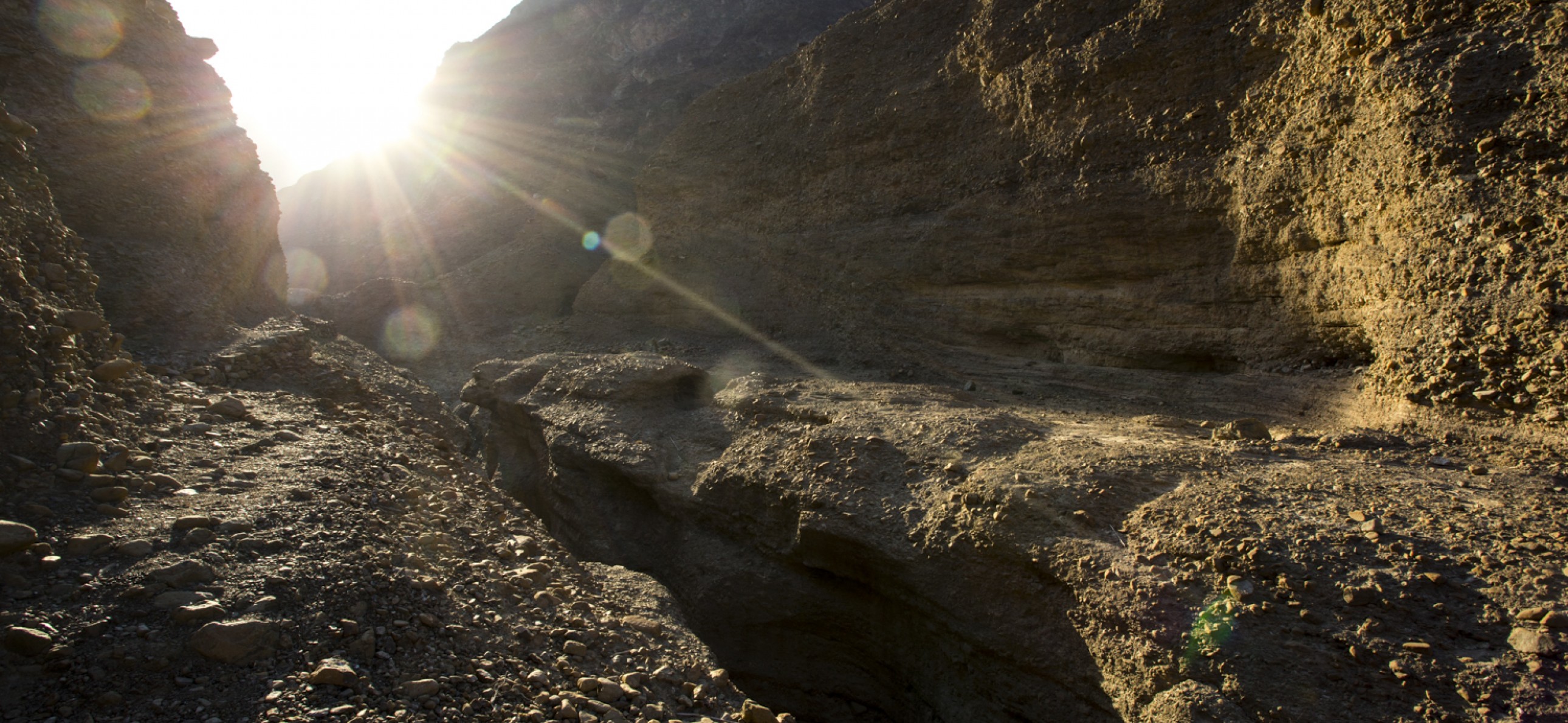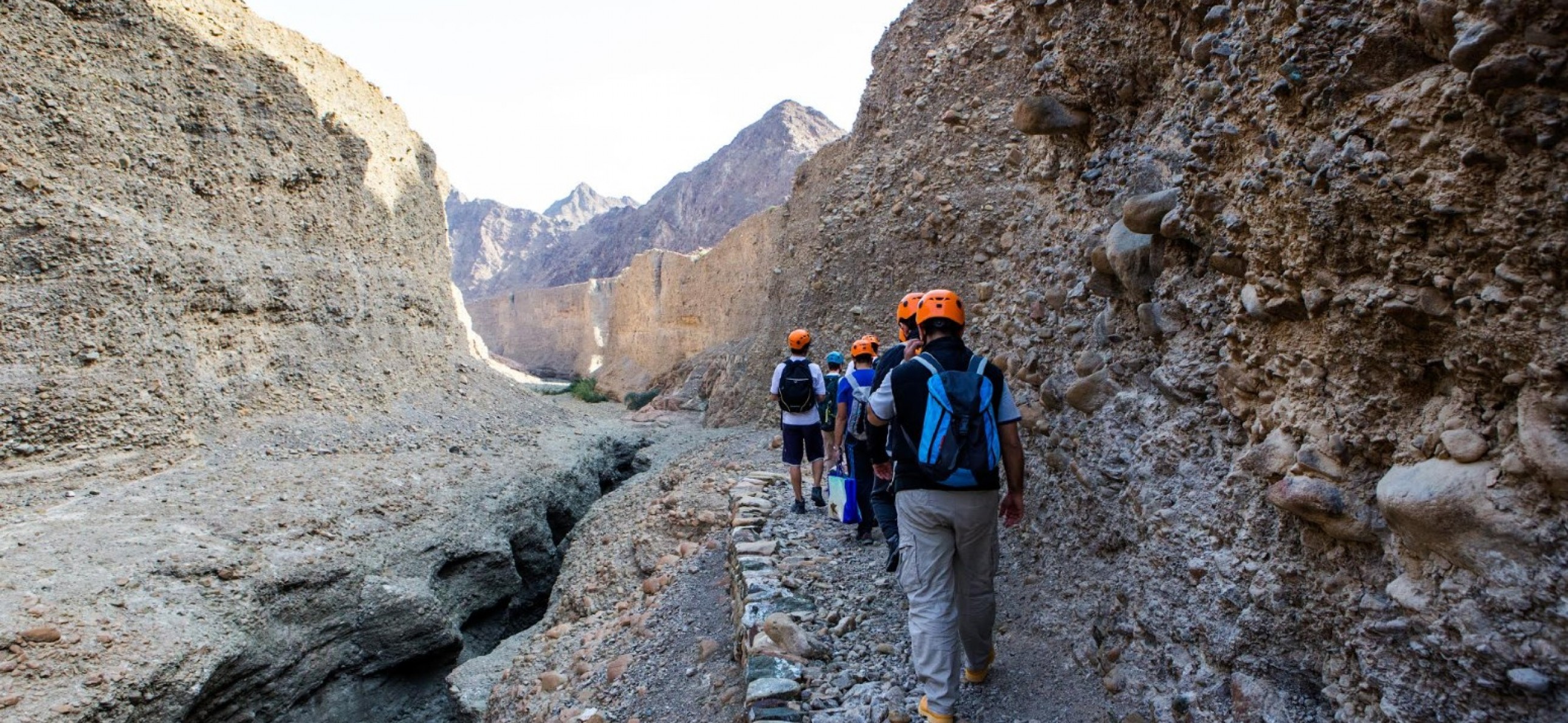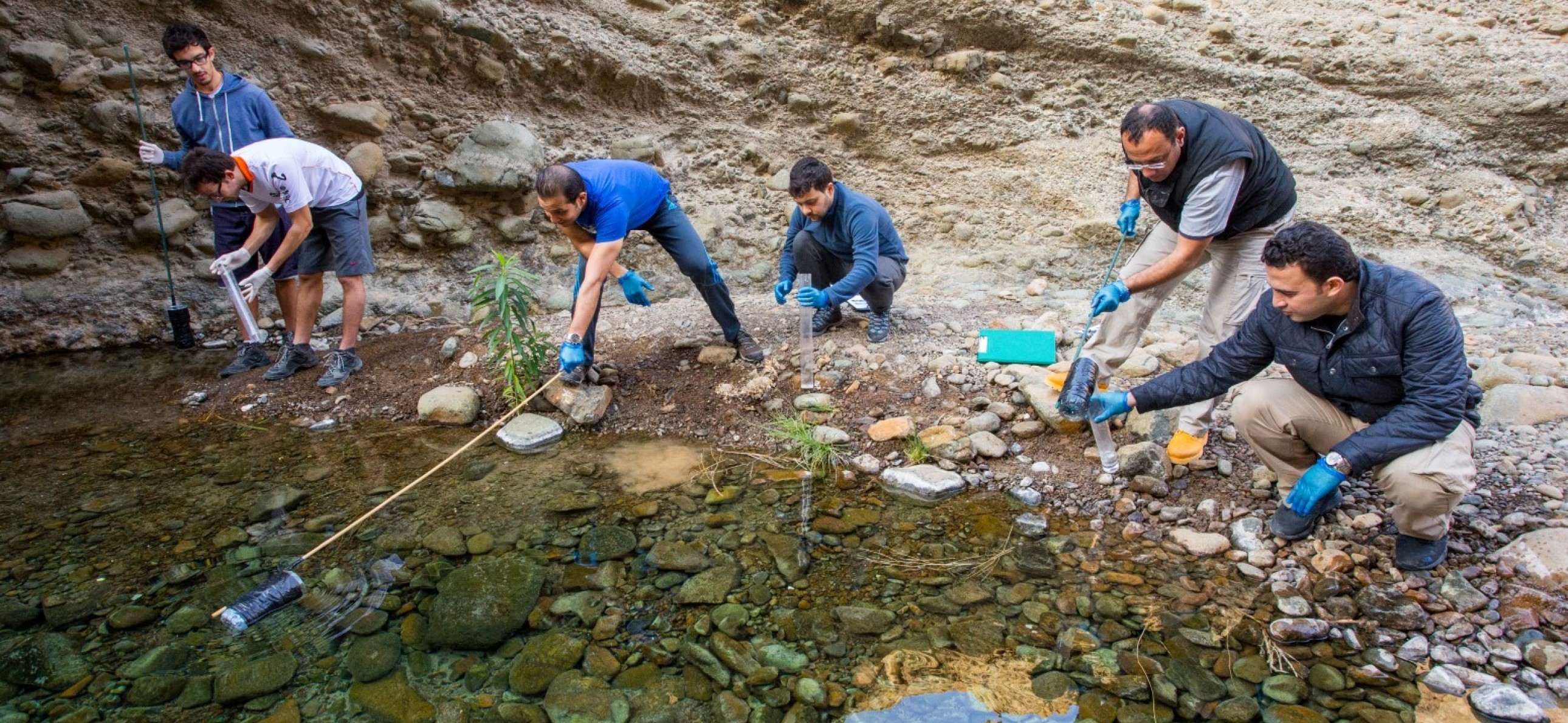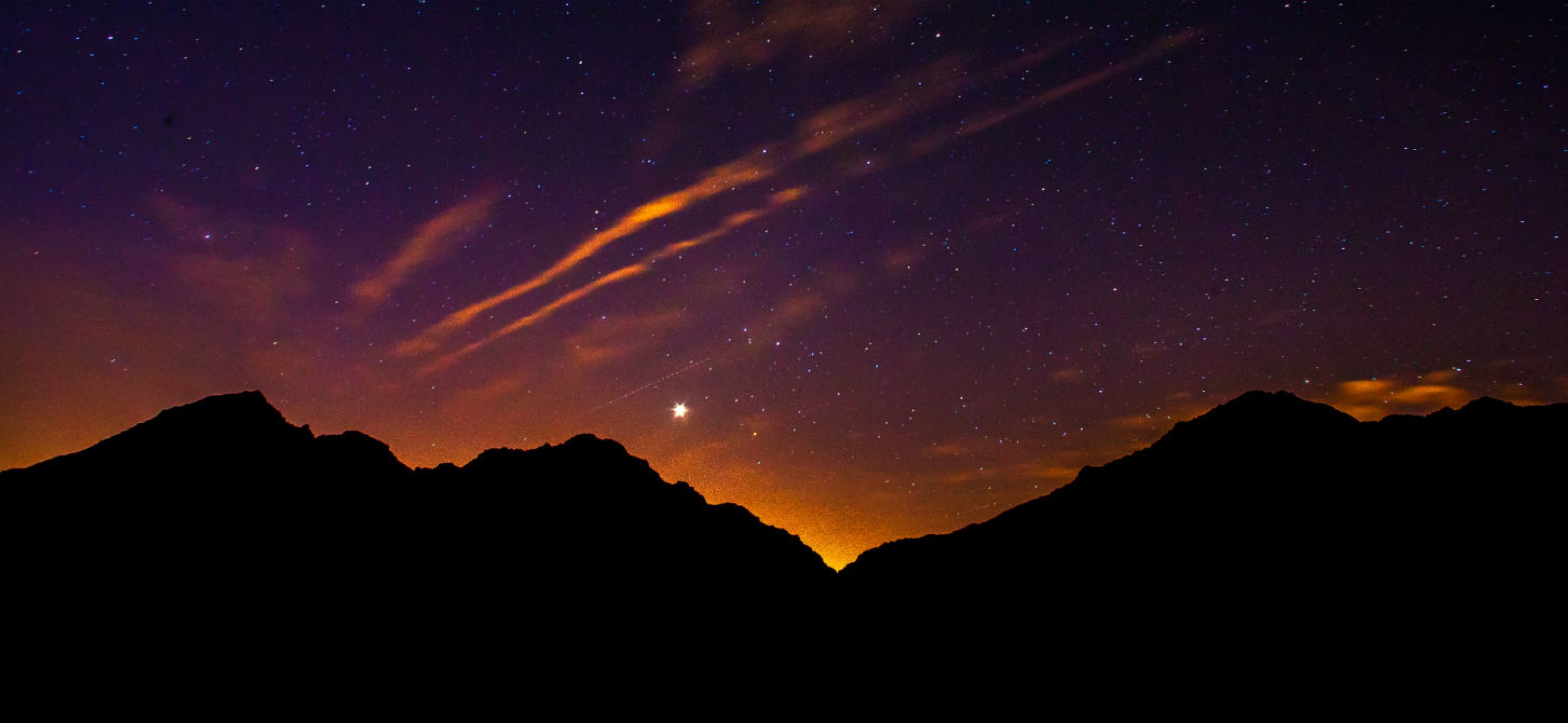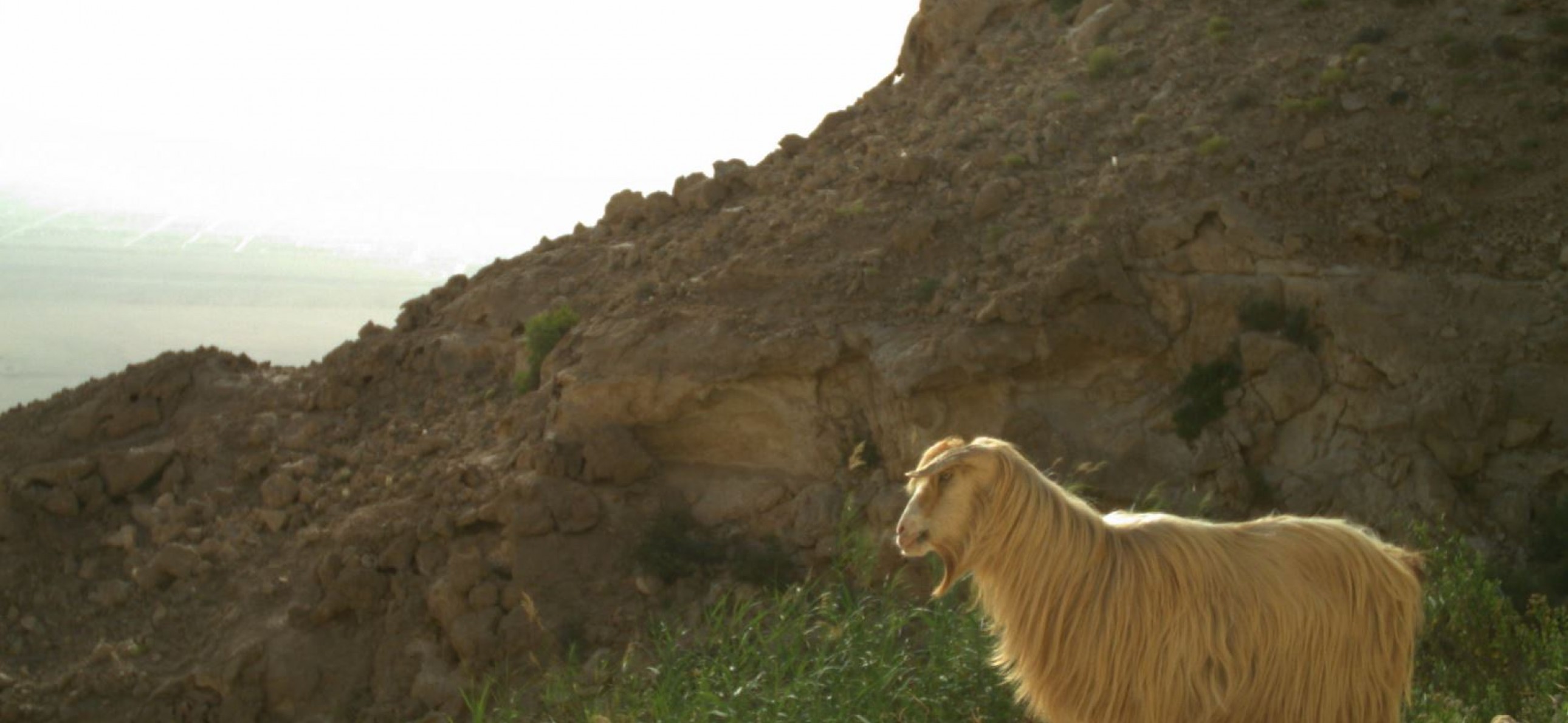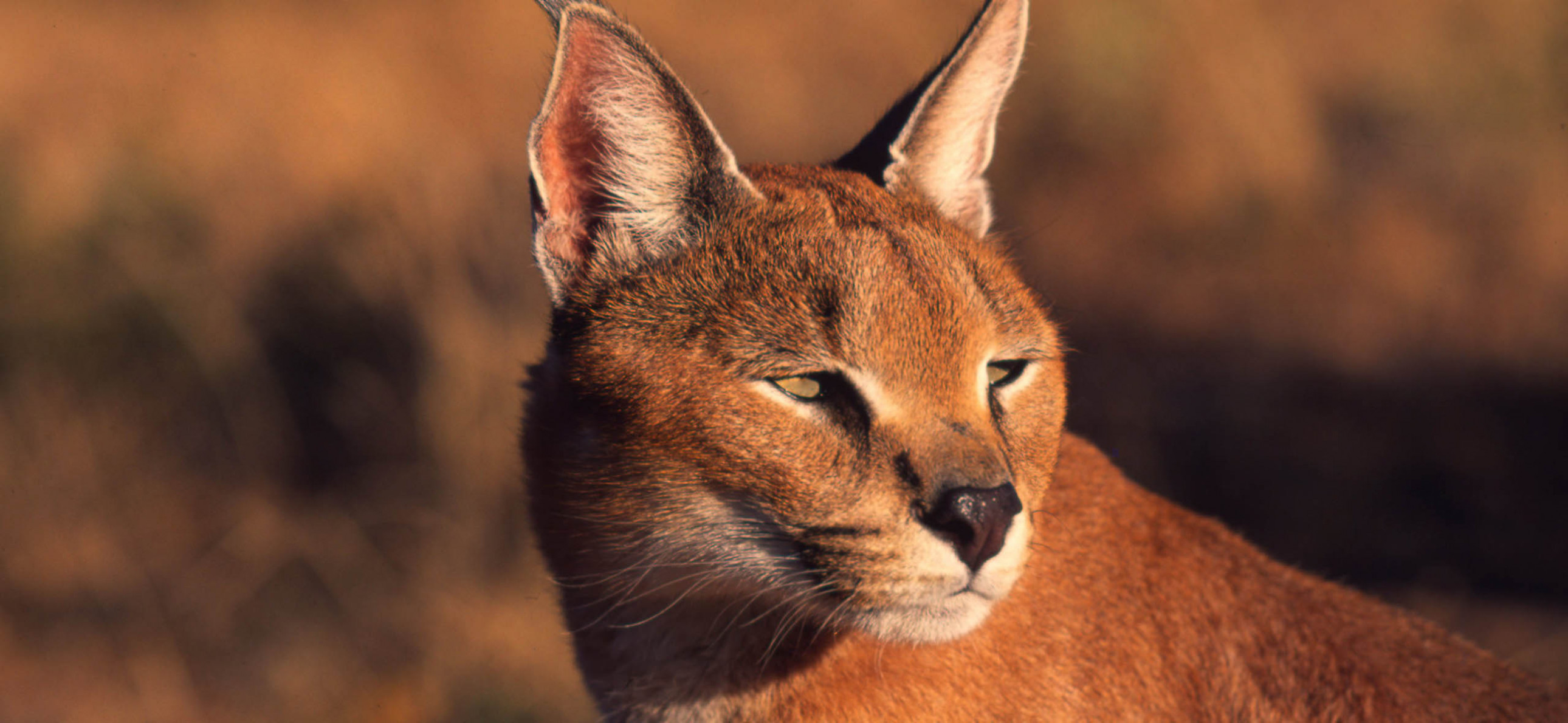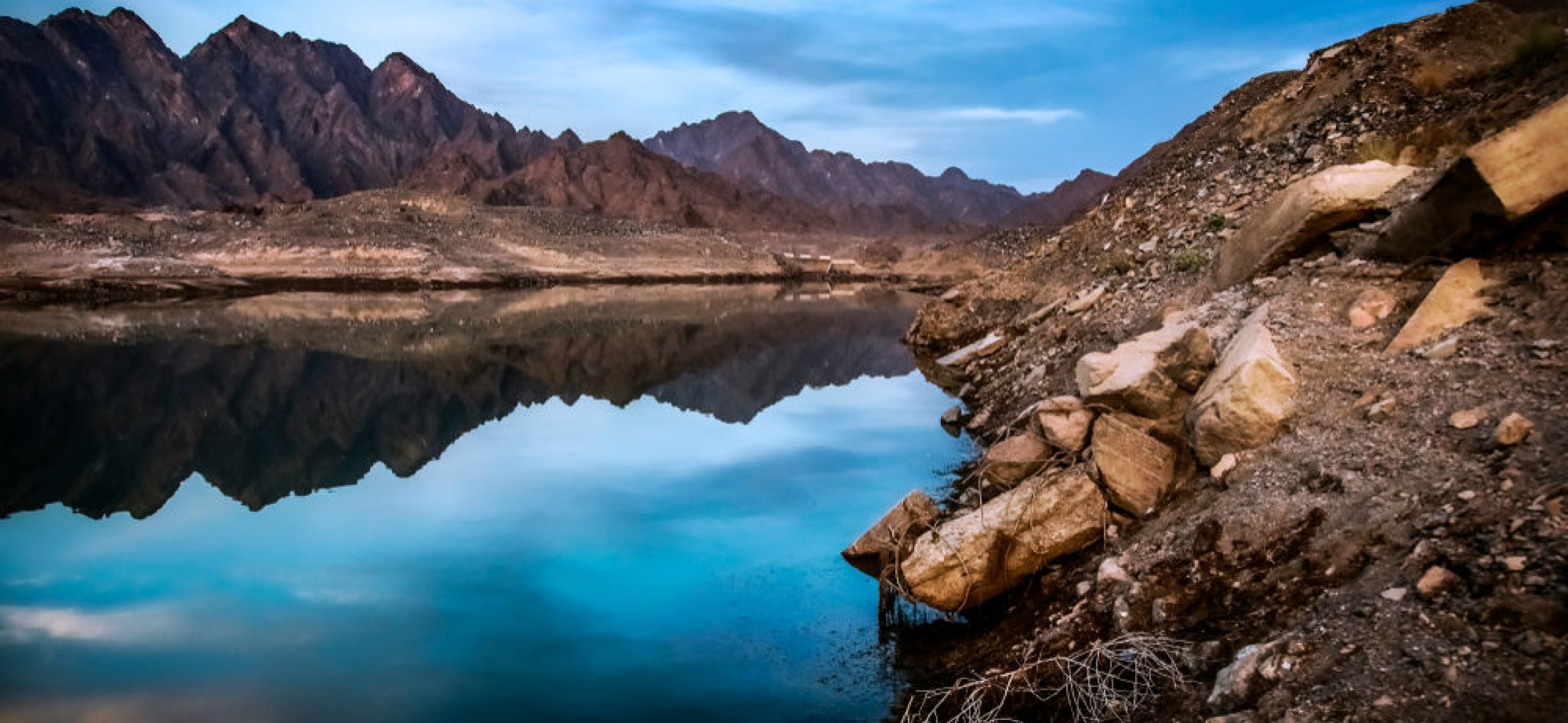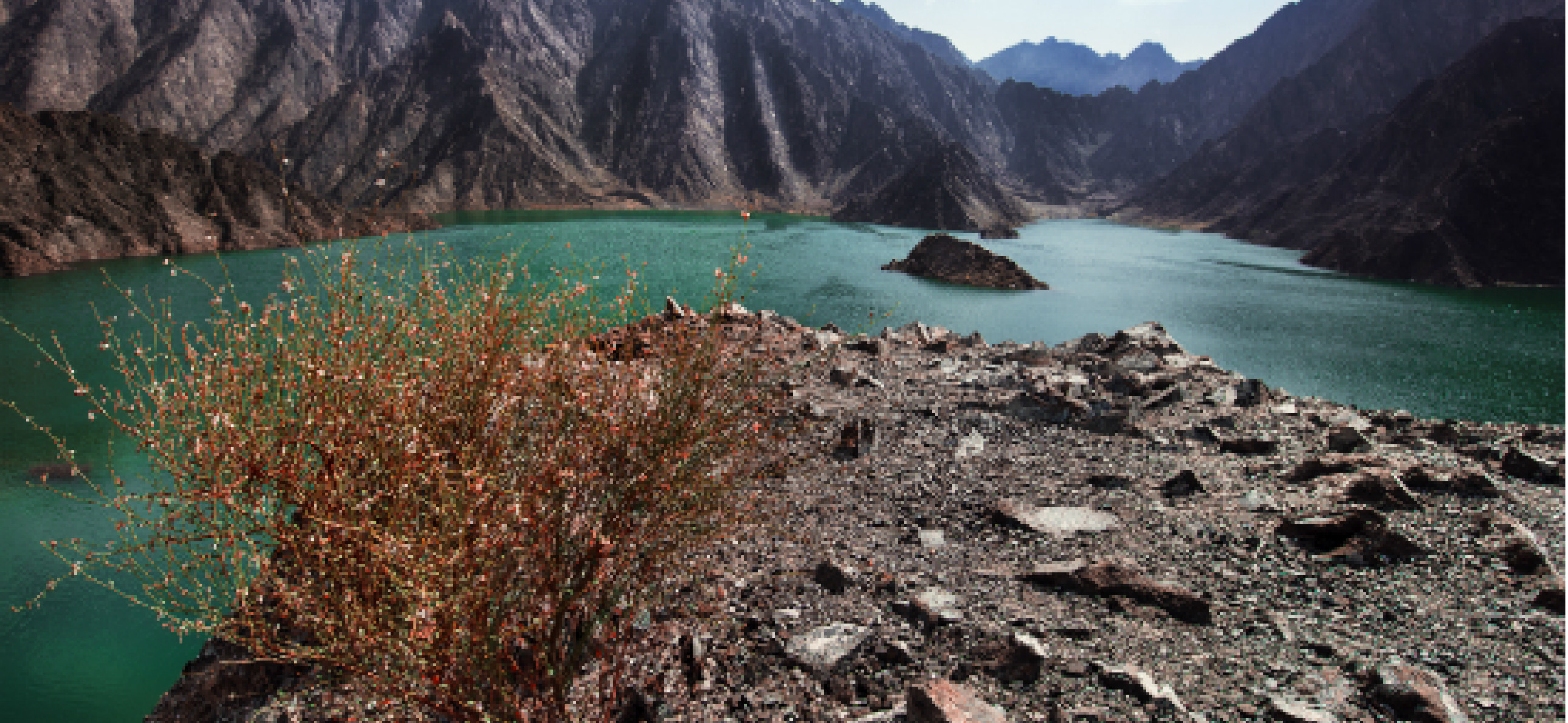Home to caracals, owls, foxes, and vipers; cultivation ground for honey; as well as a destination for explorers and adventurers… Get to know more about the mountains and wadis in the UAE, the region’s natural hidden gems.
Mountains
Within the mountain range of the UAE, a secret world of brooks, caves, rock pools and creatures come awake at night.
Mountains border the desert landscape of Eastern UAE in Al Ain, Ras Al Khaimah and Fujairah. Ras al Khaimah is home to UAE’s tallest mountain, Jebel Al Jais as part of the Hajar Mountain range. If you’re looking for a thrilling experience, if you love driving up winding mountain roads, if you are simply longing to escape from the city…this is a must visit place in UAE.
These mountains are home to unique ecosystems of freshwater habitats, known as wadis, which support a biodiversity of flora and fauna different to that of the neighboring desert ecosystem. The mountains of the UAE also provide the best climate to rear the highest quality bees and produces the best honey.
What you should know about mountains!
- They cover 22% of the earth’s land surface!
- They provide 60-80% of the world’s freshwater
- Differing elevations allow for a range of vegetation/plants and animal species.
- They can even make their own weather! Mountains have their own microclimate, their height and size can influence weather patterns. For example, winds rushing toward the side of a mountain will be forced upwards because of the mountain’s height. This air will mix with the colder, thinner air, and as the air cools it will become more prone to create rain!
- Half of the world’s biodiversity hotspots are concentrated in mountains – they support 25% of terrestrial biodiversity and 28% of earth’s forests.
- Mountains attract 15-20% of global tourism.
- “International Mountain Day” is celebrated on December 11 to highlight the importance of sustainable mountain development
Wadis
Wadis are closely associated with mountains and are remarkably rich in species. While most wadis in the UAE don’t have permanent water, the times they do have water, wadis are unique wetland ecosystems. They are classified as a wetland region due to their aquatic habitats, which include temporary rainwater pools, bedrock and gravel riffles and gravel pools, creating ideal breeding grounds for species such as birds, dragonflies and butterflies.
Most wadis are found in rocky mountains near the east coast of the UAE.
Wadi Al Wurayah, in the Hajar mountains, is the first protected mountain area in the UAE, in eastern UAE and northern Oman.
The climate of Wadi Al Wurayah is characteristic of a hot, hyper-arid mountain desert environment, where temperatures can reach close to 50°C in the summer months.
What species can be found in mountains and wadis?
- Arabian Tahr
- Arabian Spotted Eagle-Owl
- Caracal
- Blanford’s Fox Vulpes
- Omani Saw-scaled Viper
- Dhofar and Arabian Toads
- Oman Garra
- Acridocarpus orientalis
- Orchid (Epipactis veratrifolia)
Why are mountains and wadis important?
- They promote rainfall. As humid air reaches the side of a mountain, it is forced to rise and cools at higher altitudes, resulting in condensation and rain, a precious resource in the UAE.
- They are home to endangered species in the UAE – Wadis such as Fujairah's Wadi Wurayah is known for being the last refuge of rare animals like the Arabian Leopard and the Arabian Tahr, and hundreds of plant species.
- They act as physical barriers for the wind.
- Wadi Al Wurayah is a rich archaeological and historical site, where old settlements as old as 3000 BC have been found.
- They are home to various species codependent on one another for survival. Think about the possible existing relationships among the following living and non-living creatures: tadpoles, frogs, water beetles, plants, the Sun, vipers, and water.
Threats to UAE Mountains and its wadis:
- Groundwater extraction from local farms lowers the freshwater table of the Hajar mountain range and can kill natural vegetation in low-lying areas. The intrusion of sea-salt water in the table (due to rapid expansion mainly in agricultural areas) also results in excess salts in water resources and soil. This is a resource concern because excess salts hinder the growth of crops by limiting their ability to take up water.
- Litter from tourists, fires and vehicle tracks degrading the mountain range. These very reasons forced the closure of Wadi Al Wurayah, to allow its delicate ecosystem to recover from the harm of human impact. Why is litter such a major problem? Because mountains have their own microclimate, and its unique fauna and flora have a short reproductive timeframe and are sensitive to disturbance. Hard substances like soda cans, plastic, glass bottles and Styrofoam products take a very long time to break down and some of these products might never even biodegrade. The danger is that products that do not biodegrade will continue to pile up over time and will emit toxic pollutants from long-term exposure to air, light and water.
- Climate change is a major threat to biodiversity in the wadi because species found here are particularly sensitive to extreme changes in the climate – they act as important indicators of the health of an ecosystem – their thriving or dwindling existence depend on the health of their habitats.
- Dams
Other threats to mountains in the UAE include:
- Overgrazing due to introduced donkeys and goats
- Urbanization
- Wildlife poaching
- Quarrying/mining
- Fragmentation, loss of connectivity between habitats
- Light and noise pollution
- Human disturbance
Things to do in the wadi:
- Bird watching – this is NOT a boring hobby, especially once you learn about what birds these beauty spots have to offer!
- Hiking and mountain biking
- Rock climbing
- Picnics
- Clean-ups
- Camping
- Wildlife photography (with respectful code of conduct…)
- Meditation / resourcing/ breathing fresh air, away from stress of the cities and urban life
Respect nature – keep your voice low and avoid loud music that can frighten wildlife. Don’t forget to ‘leave no trace’. Collect all rubbish, whether it belongs to you or not, because we all share this one home we call Earth!
Mountains and wadis in the UAE that you can visit:
- Jebel Hafeet
- Jebel Jais
- Wadi Al Bih (Hajar Mountains)
- Wadi Ghalilah
- Wadi Showka
- Hatta (Hajar Mountains)

